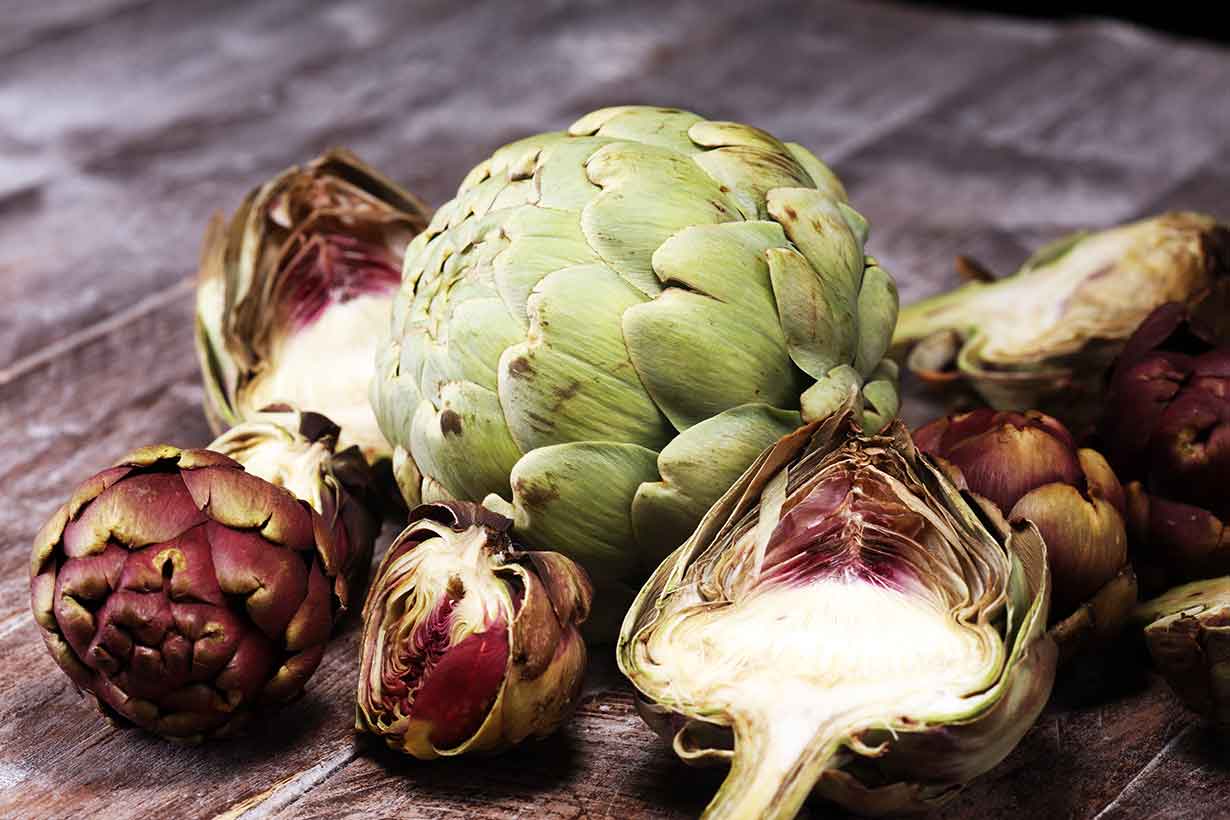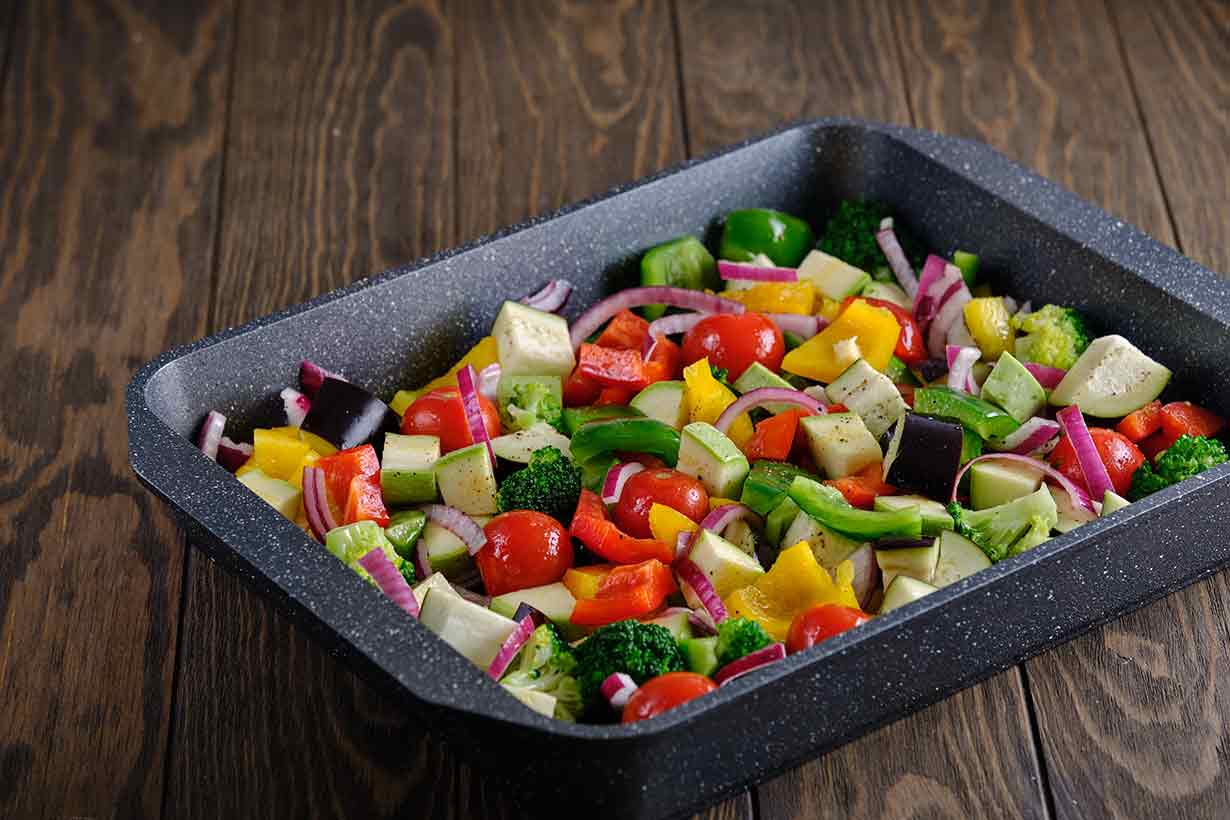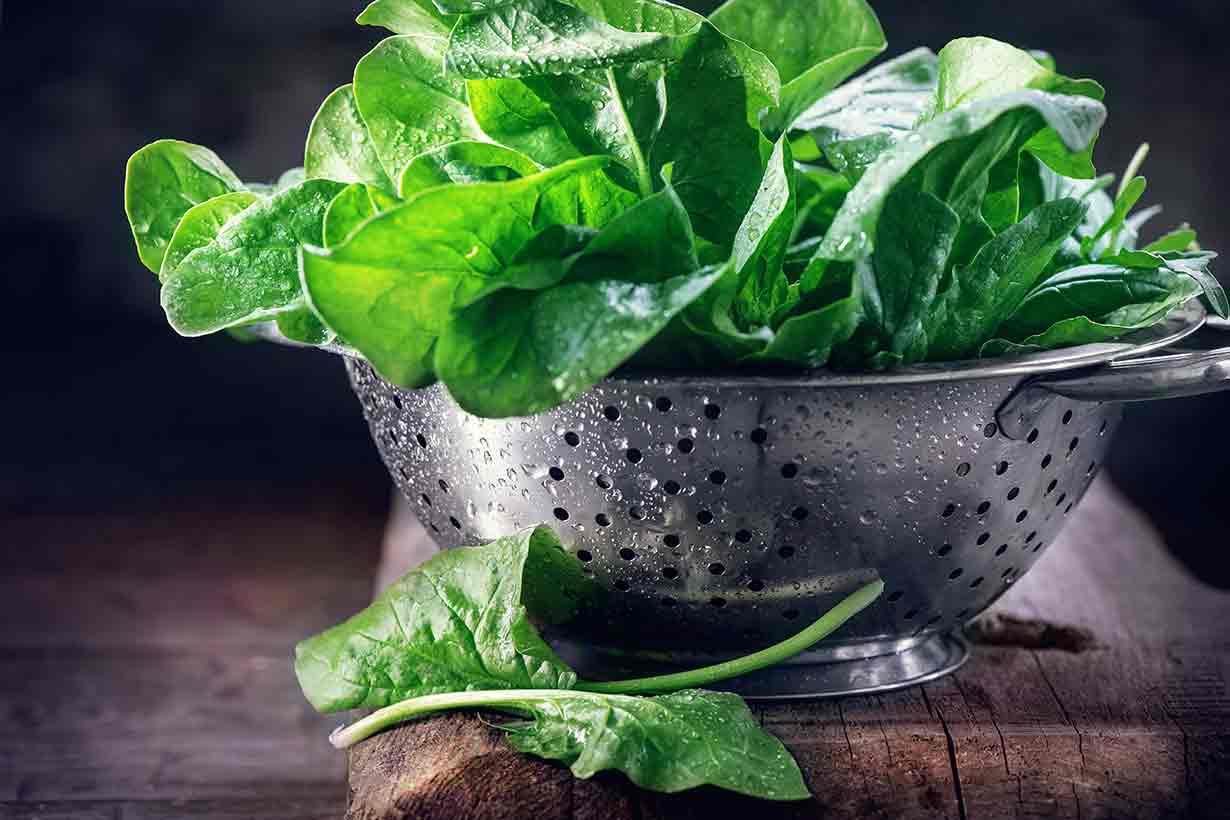Sweet potatoes (Ipomoea batatas) are a popular starchy vegetable that grows underground.
To be specific; sweet potatoes are a tuber, which is a type of root vegetable.
Despite their name, sweet potatoes bear no relation to regular potatoes, and they are part of a different botanical family.
Sweet potatoes are incredibly versatile, and they taste delicious, but what do they offer nutritionally?
This article provides a complete guide to sweet potatoes, their nutrition profile, potential health benefits, and more.
Types of Sweet Potato
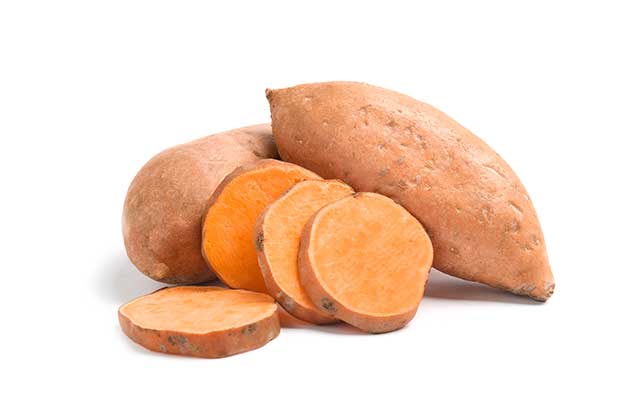
All sweet potatoes belong to the Convolvulaceae family of plants, more commonly known as ‘bindweed’ or ‘morning glory.’
Just like there are numerous varieties of apples and mushrooms, the same is true for sweet potatoes.
In fact, there are more than 6500 kinds that grow around the world.
Below, you can find some of the most famous varieties;
- Beauregard
- Carolina Bunch
- Centennial
- Darby
- Jersey
- Jewel
- Kotobuki
- Nancy Hall
- Red Garnet
- Red Jewel
- Okinawa
- O’Henry
- Porto Rico
- Satsuma
- White sweet potato
- Yamiano
Among these sweet potatoes, the most common is probably the orange-fleshed Beauregard.
Some of the more unique (to the Western world) varieties include the purple-fleshed Okinawan and the white sweet potato.
Nutritionally speaking, each sweet potato variety offers a similar set of nutrients.
Nutrition Facts
One large sweet potato (baked) offers the following nutrition profile.
The source for all nutrition data is the NCC Food and Nutrient Database.
| Calories/Nutrient | Amount |
|---|---|
| Calories | 162 kcal |
| Carbohydrate | 37.28 g |
| Fiber | 5.94 g |
| Sugars | 11.66 g |
| Fat | 0.27 g |
| Saturated Fat | 0.09 g |
| Monounsaturated Fat | Trace |
| Polyunsaturated Fat | 0.17 g |
| Omega-3 Fatty Acids | 0.01 g |
| Omega-6 Fatty Acids | 0.16 g |
| Protein | 3.62 g |
As shown in the table, sweet potatoes are primarily a source of starchy carbohydrate.
They contain a moderate amount of fiber, and they are low in fat and protein.
| Vitamin | Amount | % DV |
|---|---|---|
| Vitamin A | 1730 mcg RAE | 192 % |
| Vitamin C | 35.28 mg | 58.8 % |
| Pyridoxine (B6) | 0.51 mg | 25.7 % |
| Pantothenic Acid (B5) | 1.59 mg | 15.9 % |
| Niacin (B3) | 2.68 mg | 13.4 % |
| Thiamin (B1) | 0.19 mg | 12.8 % |
| Riboflavin (B2) | 0.19 mg | 11.2 % |
| Vitamin E | 1.28 mg | 6.3 % |
| Vitamin K | 4.14 mcg | 5.2 % |
| Choline | 23.58 mg | 4.3 % |
| Folate | 10.80 mcg | 2.7 % |
| Mineral | Amount | % DV |
|---|---|---|
| Manganese | 0.89 mg | 44.7 % |
| Potassium | 855 mg | 24.4 % |
| Copper | 0.29 mg | 14.5 % |
| Magnesium | 48.60 mg | 12.2 % |
| Phosphorus | 2.68 mg | 9.7 % |
| Iron | 1.24 mg | 6.9 % |
| Calcium | 68.40 mg | 6.8 % |
| Zinc | 0.58 mg | 3.8 % |
| Sodium | 64.80 mg | 2.7 % |
| Selenium | 0.36 mcg | 0.5 % |
Health Benefits
Through their nutritional values and characteristics, sweet potatoes offer several potential health benefits.
In this section, we will examine some of these possible benefits in more detail.
1) Sweet Potatoes May Help To Improve Vision and Eye Health
Sweet potatoes are a significant source of vitamin A.
Per large sweet potato, they contain more than 1730 mcg of retinol activity equivalent vitamin A, which is almost 200% of the recommended intake (1).
This vitamin A provision of sweet potatoes comes from the substantial amount of carotenoids (34592 IU) they contain. While carotenoids are not the most bioavailable form of vitamin A, they can convert to retinol (the most digestible form) in the body, and sweet potatoes contain a large amount of them.
Studies also show that carotenoid compounds, such as lutein and zeaxanthin, can help to protect our visual health. On the positive side, sweet potatoes are one of the best dietary sources of these compounds (2).
Furthermore, systematic reviews and long-term observational studies demonstrate that these carotenoid compounds may protect against age-related macular degeneration (3, 4).
Macular degeneration is a degenerative eye disease that can lead to progressively worsening vision.
2) A Good Source of Fiber
Sweet potatoes provide a good source of fiber.
As shown in the nutrition facts section, a large sweet potato provides 37 grams of carbohydrate, six grams of which are fiber.
For carbohydrate foods, the presence of fiber is vital because it helps to improve the blood glucose response to that food.
As an example; sugars and refined carbohydrates quickly break down into glucose. For this reason, they tend to cause more significant blood glucose spikes when we eat them (5, 6).
However, carbohydrate foods with intact cell walls (and fiber) digest at a slower rate, thereby not causing the same spikes in blood sugar (7, 8).
Fiber may also have benefits for the health of our gut microbiome. For instance, a recent systematic review of sixty-four studies found that higher fiber intake leads to increased counts of “good” gut bacteria, such as Bifidobacterium and Lactobacillus (9).
On this note, higher quantities of beneficial gut bacteria are associated with a lower risk of obesity and disease (10, 11).
3) Sweet Potatoes Have a Comparatively Low Glycemic Index (GI)
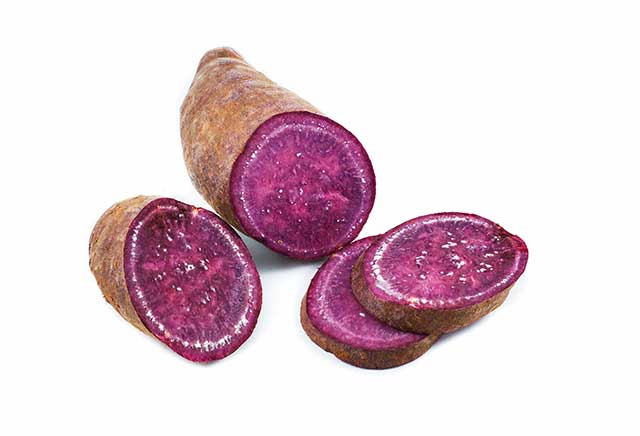
The glycemic index is a system designed to rank foods based on the impact they have on blood-sugar levels.
Foods with the most noticeable effect have a score closer to 100, while foods with the lowest possible impact would be nearer to 1.
Compared to carbohydrate-based staple foods such as wheat, rice, and regular potatoes, sweet potatoes have a much lower glycemic index.
According to the Harvard School of Health, here are the respective glycemic indexes of the foods mentioned above (12);
- Sweet potatoes: 63
- White rice: 73
- Wholewheat bread: 74
- Potato: 78
As shown, sweet potatoes have a lower impact on blood sugar than do other high-carbohydrate staple foods.
The Cooking Method Affects the Glycemic Index of Sweet Potatoes
Interestingly, a recent study showed that the way we cook sweet potatoes has a significant impact on the glycemic index value.
In this study, boiled sweet potatoes had GI values as low as 41. In contrast, GI values for roasted sweet potatoes were as high as 93 (13).
It is also worth noting that eating dietary fat alongside a carbohydrate source can help to slow digestion and lower the glycemic index.
Adding a little bit of butter on top of sweet potato can help in this regard, and it improves the taste too (14).
4) High In Potassium
Similar to other root vegetables, sweet potatoes are rich in potassium.
A single large sweet potato offers 855 mg of potassium, which is equal to 24% of the daily value.
Potassium is an essential mineral that has a range of crucial functions in the body.
Among these roles, potassium is particularly important for its role in regulating blood pressure (15).
On this topic, research shows that increasing dietary potassium intake reduces systolic and diastolic blood pressure (16, 17).
Notably, lower blood pressure is associated with a reduced risk of cardiovascular disease and all-cause mortality (18).
5) Sweet Potatoes Contain Resistant Starch
Resistant starch was not discovered until the 1980s, but it is a type of carbohydrate that acts in a similar way to fiber.
In other words; “resistant” starch resists digestion in the small intestine and ferments in the large intestine. As a result, we do not digest it (19).
Resistant starch can help to lower glycemic response, and it may help to improve gut health by feeding beneficial gut bacteria (20).
Interestingly, cooking and then cooling sweet potatoes increases their resistant starch content. Re-heating the sweet potatoes after cooling does not negatively affect this extra resistance starch (21).
6) Sweet Potatoes Contain Antioxidants and Polyphenols
First of all, sweet potatoes are a fairly good source of vitamin C and vitamin E. Both of these vitamins have antioxidant properties in the body.
As part of their functions, vitamins C and E may both help to lower oxidative stress caused by free radicals (22, 23).
In addition to these antioxidant vitamins, sweet potatoes also provide a variety of polyphenols. Among these polyphenols, sweet potatoes are particularly rich in chlorogenic acid (24).
The Okinawan purple sweet potato also provides anthocyanins, as found in purple-colored foods like blueberries (25).
Polyphenols are thought to hold benefits for human health, and observational studies link the compounds to a lowered risk of cancer and other chronic diseases (26, 27, 28).
That said, the mechanisms of their action are not fully understood, and sufficient human trials to conclusively support their benefits are currently lacking.
Sweet Potato Drawbacks
Generally speaking, there are no real nutritional concerns about sweet potatoes, and allergies are rare.
That said, one potential issue is the oxalate content.
Oxalate is an anti-nutrient that can (in excess) play a causational role in kidney stones. Furthermore, individuals with existing kidney problems sometimes follow low-oxalate diets (29, 30).
According to datasets provided by Harvard School of Health, a cup serving of sweet potato contains 28 mg of oxalate (31).
Although consuming this amount of oxalate is not an issue for most healthy people, it is considered a high-oxalate food for low-oxalate diets.
In general, low-oxalate diets tend to contain fewer than 50 mg of oxalate per day (32).
Final Thoughts
Sweet potatoes are a fairly nutritious tuber that offers several nutritional benefits.
These tubers are enjoyable to eat, and they offer great versatility too; you can bake, fry, mash, or steam them. You can even make them into chips or fries.
While they offer no unique benefits, sweet potatoes are one of the healthier high-carbohydrate foods.
For more on vegetables, see this guide to 50+ of the most common vegetable options.



